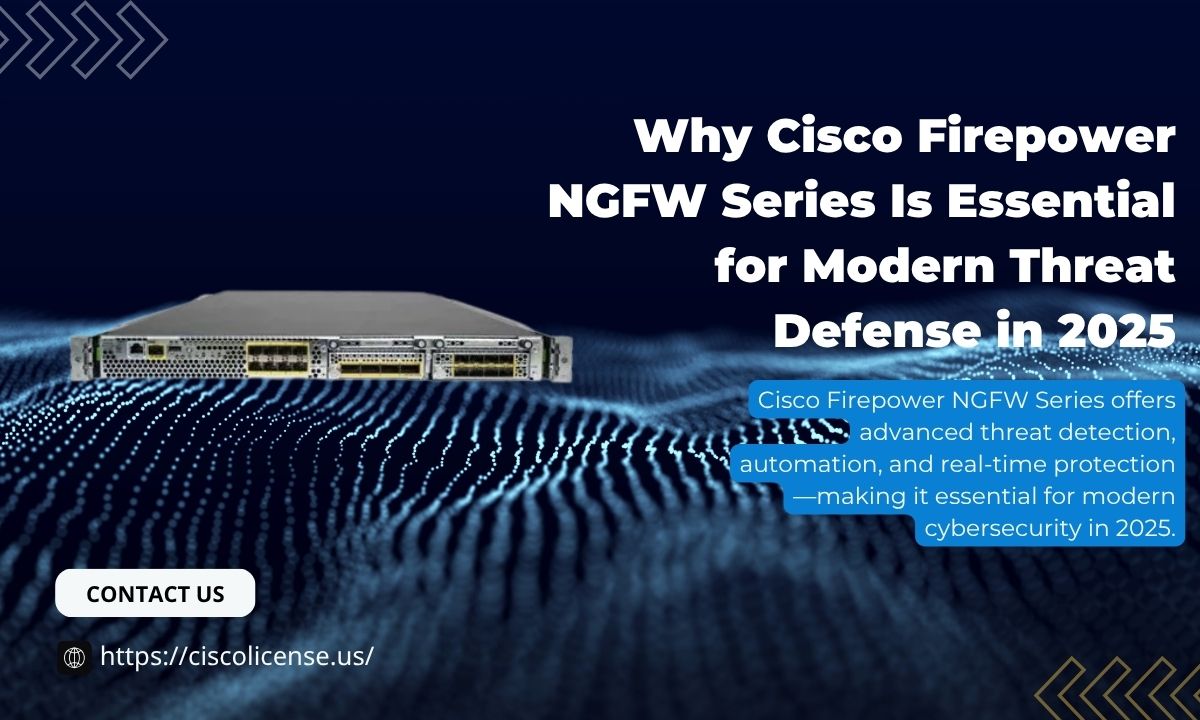
Cybersecurity in 2025 is a completely different game compared to a few years ago. Attacks are faster, more advanced, and increasingly automated. It is no longer just about stopping viruses or blocking suspicious IPs.
Today, protecting your organization means having a deep, smart, and always-updated defense system in place, and that’s exactly where the Cisco Firepower NGFW (Next-Generation Firewall) Series steps in.
If you’re wondering whether it’s worth considering for your business, this blog explains why Cisco Firepower NGFW is not just helpful but essential in 2025.
Simply put, NGFW is a security firewall. While traditional firewalls mostly block or allow traffic based on IP addresses or ports, Cisco Firepower goes way beyond that. It understands the context of the traffic, learns from threats, and adapts in real time.
So instead of just putting a gate at your network’s front door, it watches what’s happening inside, spots strange behavior, and reacts fast. That’s crucial in 2025 when cyberattacks can come from anywhere, in any form.
Let’s say you run a small- or mid-sized company. You might have a basic firewall running, maybe even antivirus on devices. But modern threats don’t just knock on the front door; they sneak in through emails, fake links, insider actions, outdated apps, and cloud services.
Traditional firewalls can’t detect:
That’s why Cisco Firepower NGFW is designed differently. It brings intelligence and automation to the table and this is something older systems simply don’t have.
Here’s what sets it apart:
Cisco Firepower uses Talos, which is one of the largest commercial threat intelligence groups in the world. It gathers data from across the globe and updates the system constantly. So, if a new attack method is discovered in Europe this morning, your firewall in India can block it within minutes.
According to a Cisco study, only 15% of companies are fully prepared for modern threats. Firepower aims to close that gap by providing automated, real-time protection.
This firewall doesn’t just block or allow websites. It sees what apps are being used, who is using them, and how. Whether it’s social media, cloud storage, or collaboration tools, it gives you full control and insights. That means fewer blind spots.
It doesn’t just stop known malware but it watches how files behave even after they enter your system. If a file starts acting shady, Firepower blocks it immediately.
The average time to detect a data breach is 204 days, according to a Ponemon Institute study. Cisco Firepower drastically cuts this time by detecting threats early, sometimes within minutes.
When Firepower sees something suspicious, it doesn’t wait for a human to act. It can automatically change network policies, quarantine devices, or alert teams, all in real time.
Let’s say a user unknowingly clicks a phishing email link. Here’s how Cisco Firepower responds:
That’s the difference. It’s not just about detecting but about reacting immediately.
The truth is, threats today are not only more advanced but also cheaper to launch. Tools that were once used only by elite hackers are now available to anyone online. Small and medium businesses are especially at risk, not because they’re big targets but because they’re easy ones.
And with remote work, cloud applications, BYOD (bring your own device), and hybrid environments becoming the norm, traditional firewalls are just not built for the complexity.
Cisco Firepower NGFW is designed for this new reality as it scales, adapts, and learns. It doesn’t just protect the perimeter; it protects everywhere your data lives.
If you’re trying to figure out the right security solution for your business or team in 2025, the Cisco Firepower NGFW series should definitely be on your shortlist. Not because it’s flashy or expensive, but because it works silently, intelligently, and constantly.
To sum it up:
The bottom line? You don’t need to be a large enterprise to use enterprise-grade security. Smart protection is now possible with Cisco Firepower NGFW, and by 2025, it will be essential.
Sed non elit aliquam, tempor nisl vitae, euismod quam. Nulla et lacus lectus. Nunc sed tincidunt arcu. Nam maximus luctus nunc, in ullamcorper turpis luctus ac. Morbi a leo ut metus mollis facilisis. Integer feugiat dictum dolor id egestas. Interdum et malesuada fames ac ante ipsum primis in faucibus.